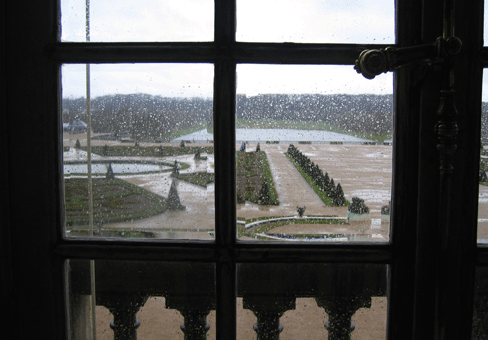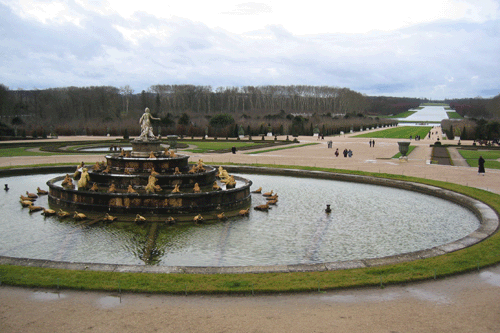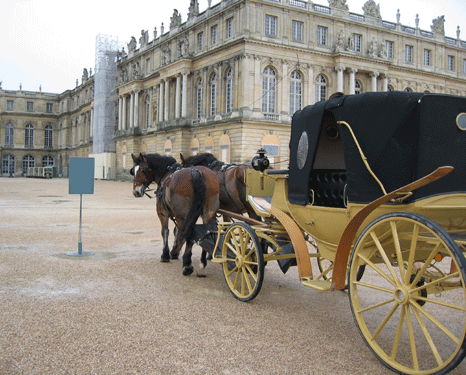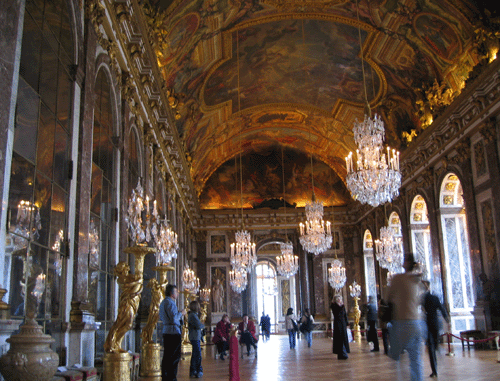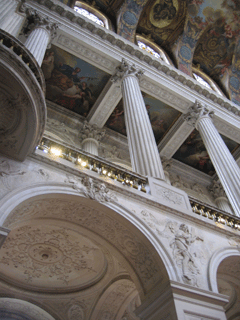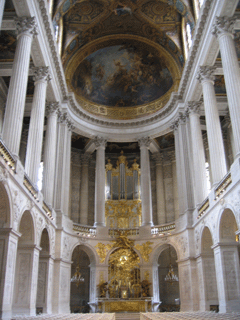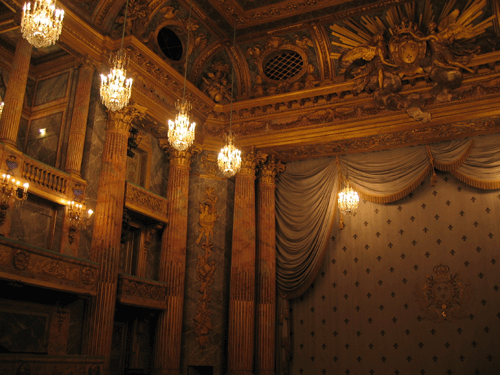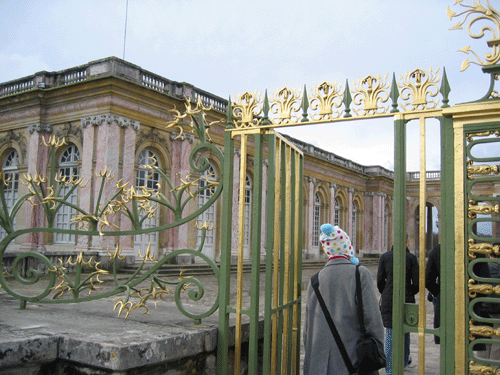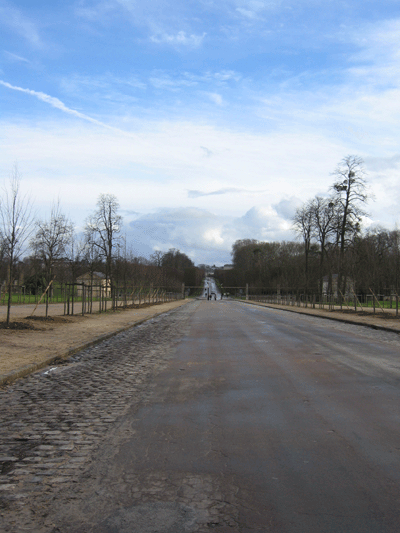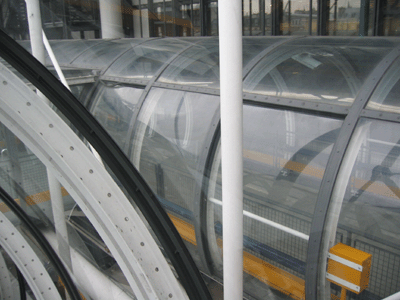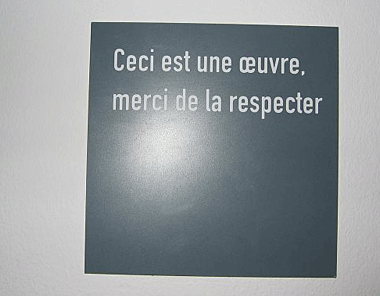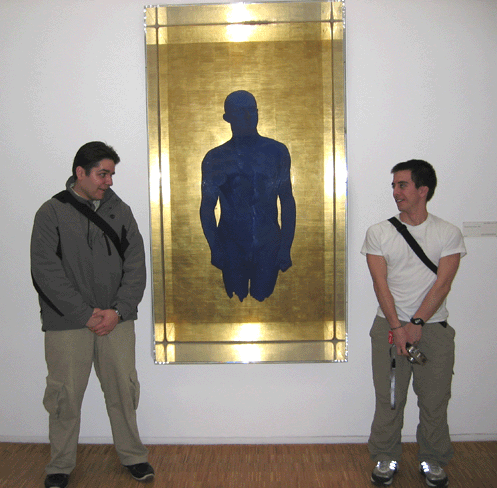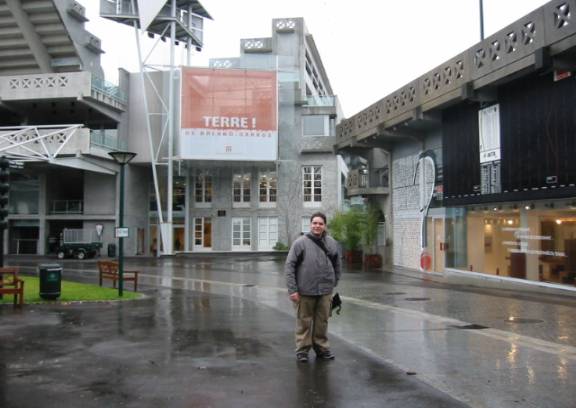In a city so rich in culture like Paris, museums of all kinds are abundant. From history to modern art, there is something for everyone. Some of us were drawn to the classics at the Louvre, others were fascinated by the original (and often strange) art at the Centre Pompidou. Here are a few of the museums we were able to see. (Use the links on the metro line above to navigate.)
Le Louvre
Museum of art, from ancient to modern times.
Recently a guy in Paris nearly got away with stealing several paintings from the Louvre. However, after planning the crime, getting in and out past security, he was captured only 2 blocks away when his Ford Econoline ran out of gas. When asked how he could mastermind such a daring and otherwise brilliant crime and then make such an obvious error, he replied: "I had no Monet to buy Degas to make the Van Gogh."
Jokes apart, the Louvre requires no introduction. With its world-famous collection ofœuvres - paintings, sculpture and objets d'art - ranging from preclassical to modern times, it is one of the largest museums of its kind. Situated in the heart of Paris on the right bank of the Seine, it was once inhabited by the kings of France (before Louis XIV decided to move to Versailles). Today it houses such celebrated works as da Vinci's La Gioconda(better known, perhaps, as Mona Lisa) and the Vénus de Milo.
One evening was all too short for us to explore this treasure-trove, but we had the advantage of having three different itineraries prepared for us by Sophie. We entered through the elegant glass pyramid (designed by I.M. Pei '40) which occupies the center of the palace courtyard, and each of us set off on his/her own path of exploration. We stayed till the museum closed at 10:00pm, and returned to our hotel, exhausted but enriched.
Musée Cluny
(Musée Nationale du Moyen Age)
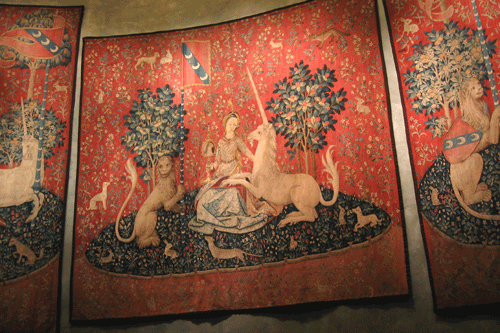
The Musée Cluny in Paris is the Museum of the Middle Ages (Moyen Age). There, among stunning damasks, glass paintings and sculptures, we visited the famous "Dame à la Licorne" or Lady with the Unicorn. The latter is a series of five woven damasks and one main one, all depicting a young woman and a unicorn amidst a colorful and detailed décor, clearly representing the five senses. Other interesting parts of the museum were the many religious figurines and representations, as well as very elaborate hair, which must have necessitated fairly advanced technology to be made so detailed. We also attended a concert at the museum, during which we were able to hear classic songs of the Moyen Agestyle.
watch the videos of the concert by Ultreia: [1] [2] [3] [4]
Musée d'Orsay
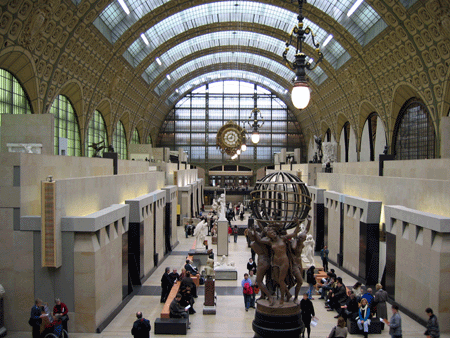
The Musee d'Orsay was originally an old palace. It was transformed into a train station for the Universal Exhibition in 1900, and it was the first Parisian train station to have electric power. In 1977, the Orsay was once again transformed into a museum of art from 1850-1914, better known as Impressionist and Post-Impressionist periods, and the beginning of Modernism. Besides painting and sculpture, the museum also has a large collection of furniture, architecture and photography. Today the museum is full of modern day artists trying to imitate the masterpieces, and the artists, as well as the artwork, are popular tourist attractions.
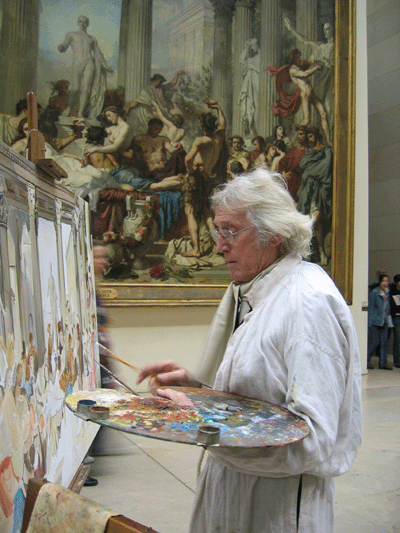
The Musee d'Orsay has exceptional permanent collections of the works of artists like Monet, Van Gogh, Cézanne, Whistler, Degas, Delacroix, Manet, Renoir, Rodin, Seurat, Sisley, Pissarro, Gauguin, Matisse, Toulouse-Lautrec, and many, many others.
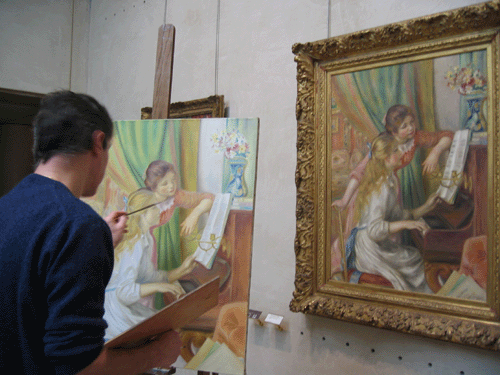
Versailles
Although it rained on our trip to Versailles, our experience at the seventeenth century castle was not any less memorable. The impressive Chateau, with its gold, marble, glass ornaments and sprawling gardens, looked like it belonged to a fairy tale. We started our tour with the main castle, before progressing to the gardens and then the Trianon, a "smaller" palace on the grounds of Versailles.
The palace of Versailles was initially constructed under Louis XIII in 1623 to serve as a hunting lodge to the King and its court of gentlemen and was only a small building of wood and brick. However, Louis XIII liked it so much that he had it expanded. Eventually, under the reigns of Louis XIV and XV, Versailles would be built upon and turned into a grandiose Chateau and, in May 6, 1682, would become the official residence of the Court of France.
The palace itself symbolizes the power of the Sun King, who reigns between God and Earth. Everything in the décor and furnishings of the palace is reminiscent of an omnipotent "Sun King". We were all very impressed by the King and Queen's chambers. Walls, ceilings and furnishings are all handcrafted in rich silks, velvets, and extensive amounts of gold and marble. The damasks in the King's apartment bear the Sun King's logo, whereas those in the Queen's are of a more flowery nature. Since all the work was handmade, it took decades to complete these rooms, and almost as long to recreate them after the Revolution. Hall of MirrorsOne of the most memorable moments at the palace was our visit to the Hall of Mirrors. By far one of the most famous rooms of the castle, the Hall is an enormous room some 73 (241 ft) meters long and 12.3 (40.6 ft) meters high, an entire wall of which is covered in mirrors symmetrically matched on the opposite wall by windows opening on the gardens.
In the afternoon, the reflection of the sun on the mirrors powerfully lights up the room, and symbolizes the light shone by the Sun King on France. Unfortunately, we were told that the museum is closed at the time when the sun hits the mirrors directly and the reflection is most spectacular (it occurs after 6pm). The ceilings of the Hall of Mirrors are lined with representative paintings, and imported marble statues adorn each side of the walkway. The famous Treaty of Versailles would later be signed in the Hall of Mirrors. The ChapelWe were granted privileged access to the Royal Chapel, where, following a rigid schedule, the Kings Louis XIII, XIV and XV attended mass every day. The foundations and ornaments of the Chapel and its high ceilings are all representative of the King as a medium between God and man. Again, marble pillars and ornate figures decorate the Chapel and the altar shines blindingly in gold and brass trimmings.
After walking around the Chapel, taking pictures like classic tourists and unable to keep ourselves from feeling slightly V.I.P (as we were the only ones allowed on the premises), we were led to the famous Opera. The OperaThe Opera, designed to seat some 712 people, was build under Louis XV and made entirely of wood. The majestic room was lit by hundreds of candles at the time of its use (apparently 10,000 candles were consumed throughout a single performance, some of which lasted more than six hours). Wood panels simulating marble line the walls, and the accoustics of the room are said to be perfect. The curtain on stage is ornamented with an embroidery of the Royal logo made of 40 kg (88lbs) of gold and measuring an impressive 5 feet in diameter.
The TrianonAfter a quick lunch at a charming restaurant in the gardens of the palace, we met with our guide for a visit of the Trianon. The Petit Trianon was a gift to Marie Antoinette by Louis XVI upon his ascent to the throne. The petit Trianon is decorated in light greens, and the wall moldings were delicate flower ornaments, all representative of the power of the king, but this time represented by flowers and plants, symbolic of summer and gardens.
We were all curious, of course, to find out if the myth that Marie Antoinette had said "Let them eat cake" to the starving of France was actually a fact. Apparently, this is false, and there are no records of any such a statement. In fact, according to our tour guide, Marie-Antoinette became in power at a very young age and was more ignorant and immature than was really arrogant.
|
Musée du Vin
(Museum of Wine in Paris)

For the wine aficionado, the “Musée du Vin” is a must. Located at what used to be the vaulted 15th-century cellars of a former abbey, this small but charming museum offers a vast array of attractions that educates visitors about wine and its history. The museum’s environment provides a charming medieval ambiance that complements wine history. We were amused by the wide variety of collections that range from an explanation on “Tilling the Soil and Planting the Vines” to expositions on the different kind of wine glasses and cups created and used by French kings. We also found useful the museum explanation on the process of wine making. That was a very enlightening experience. But the best part of the museum is the wine tasting included with the admission price. Visitors can choose to taste one of three kinds of wine (white, rose, red). At least Sebastian and Michael enjoyed this the most!
Centre Georges Pompidou
In the middle of historical Paris, surrounded by typical French cafés with miniature chairs and buildings centuries old, stands le Centre Georges Pompidou, a convoluted, inside-out, tubular mass of colors and glass, an example of modernity and efficiency. Since its opening in 1977, Centre Pompidou has become not only the contemporary center of Paris, but a place where everyone can come together to access all culture and all forms of art as freely as possible. Its exterior consists of all the structural elements and the circulation system and pipes, even the escalators, leaving the whole interior as a space for its impressive two story art collection, its public library, its music library, and its constantly new forms of live performance. With an art collection ranging from major modernist and contemporary painters like Picasso, Kandinsky, Man Ray, Dubuffet, and Dali, everyone will find something they can appreciate. Caution: Entering the museum may cause bewilderment, amazement, interest, anger, confusion, and fear.
Roland Garros and the Tenniseum
Bordering the limits of Paris lies one of the world’s most beloved sports stadiums, the Roland Garros. If you are a tennis fan you will definitely enjoy this location. As you may or may not know, Roland Garros is the site of the Roland Garros Tennis Grand Slam, the second major tennis tournament of the year. It is here, on the French red clay, where the top men and women tennis players come every year to fight against each other in one of the toughest and most challenging clay court event of the season. The complex features three major stadiums and multiple clay courts. Added recently was a tennis museum, the Tenniseum. This museum offers the first multimedia tennis museum in the world, which provides great tennis coverage of the history of tennis and Roland Garros and also offers multiple interactive exhibits with over 200 hours of tennis match footage. Michael really enjoyed this museum, spending long hours just viewing previous French Open tennis matches. Visitors beware! In order to visit the stadium, reservation is a must. Plan ahead at least a couple of days in advance.
|

